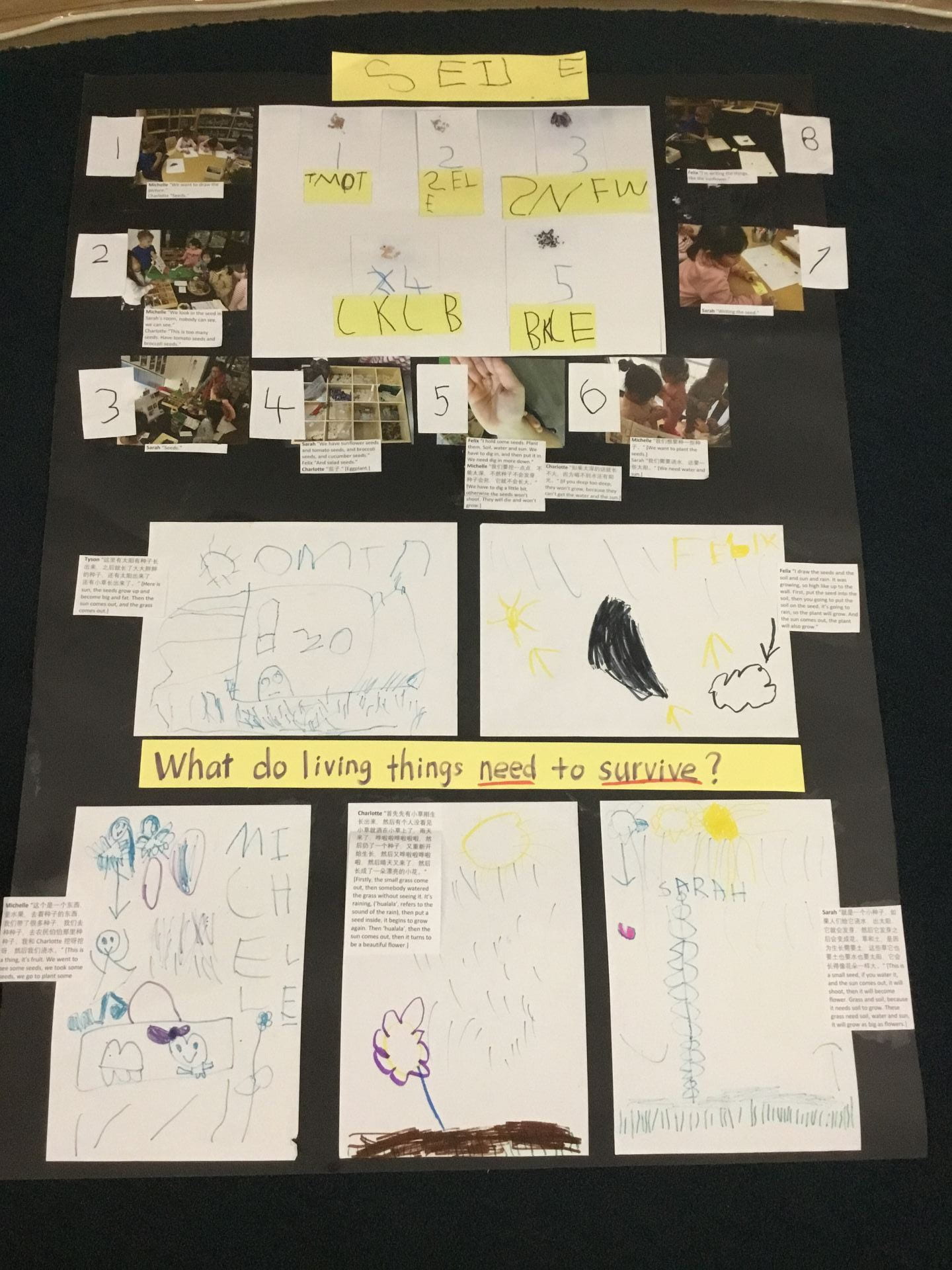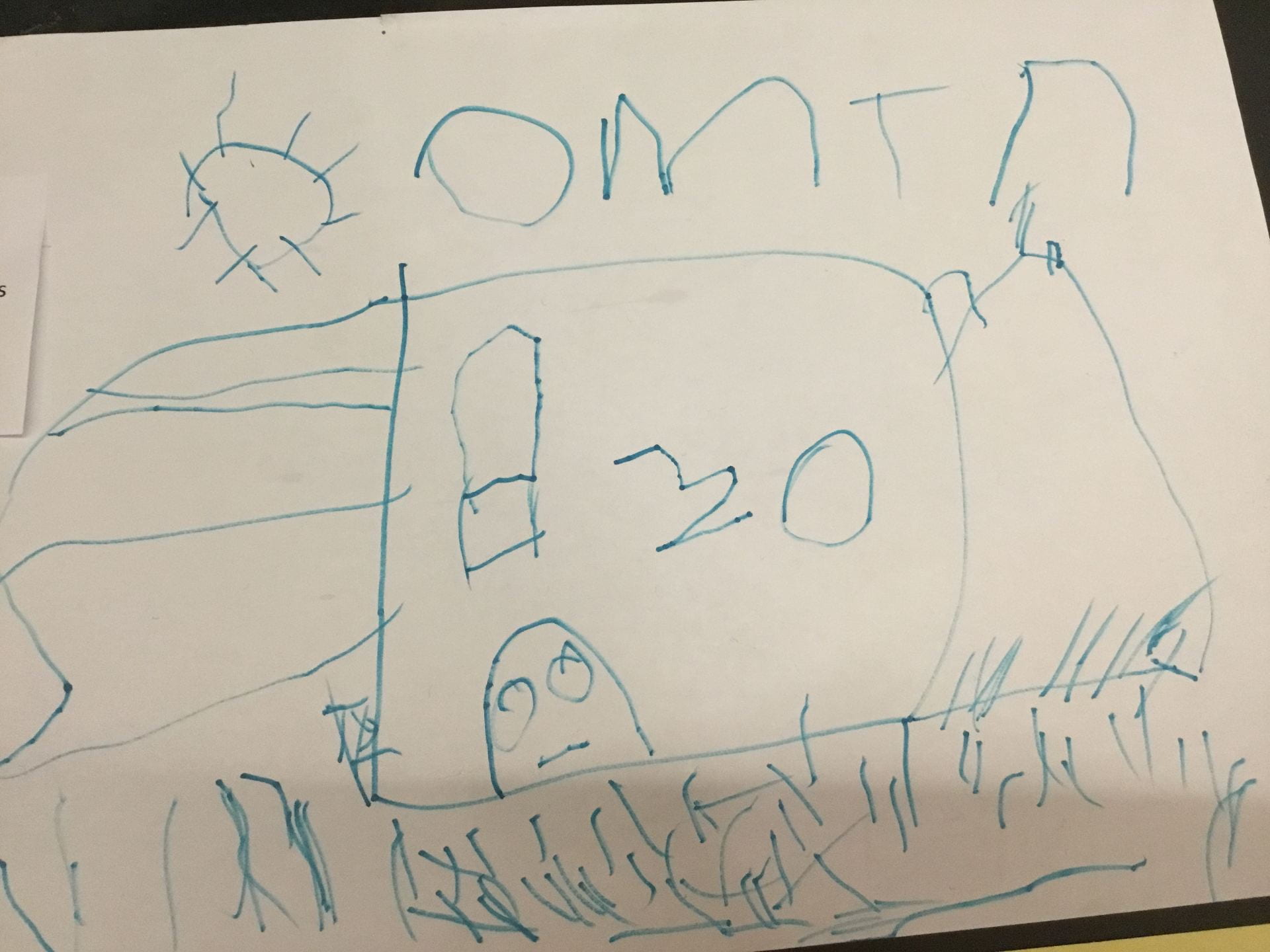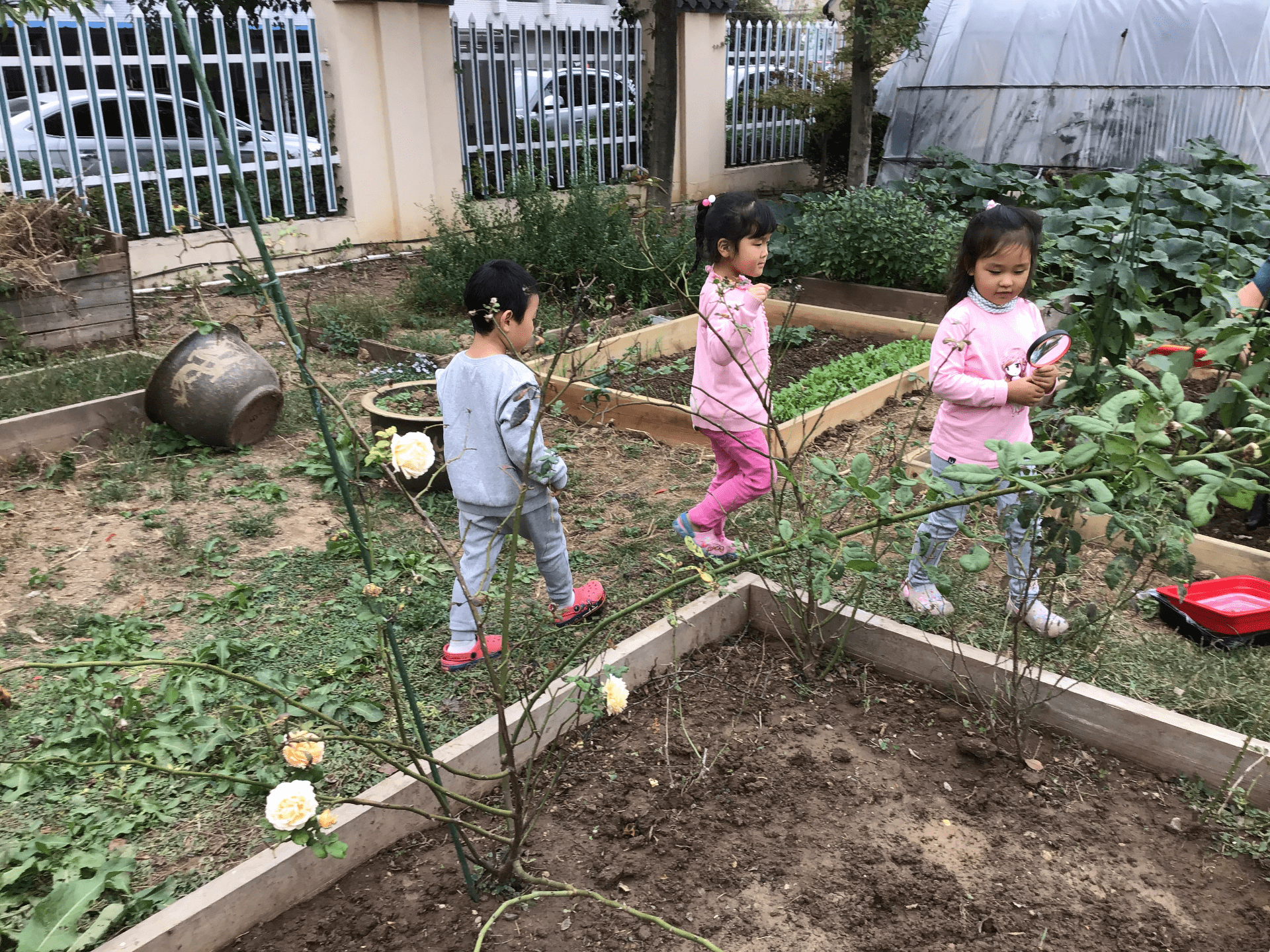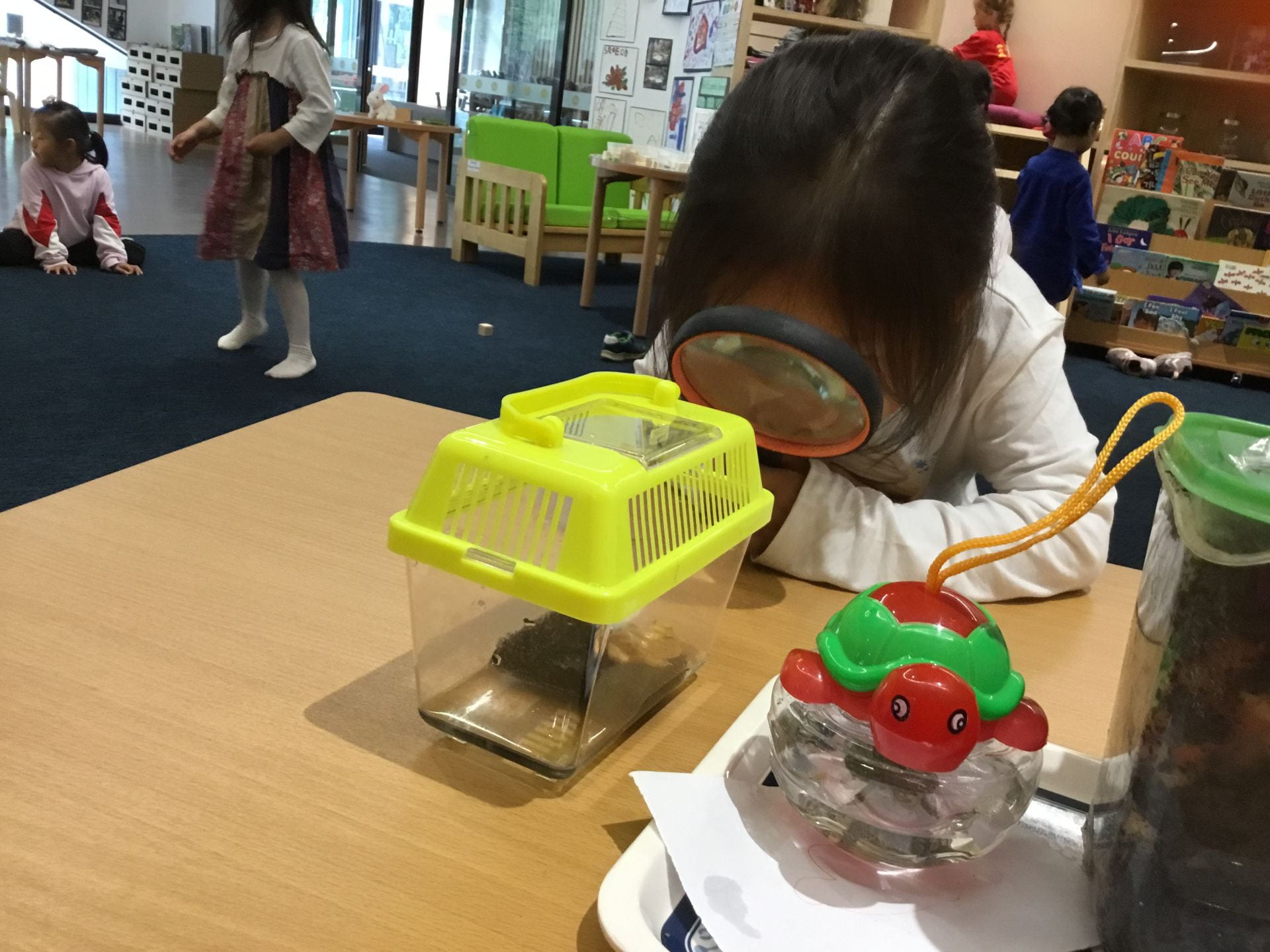A Learning Journey – SEEDS!
A group of children visited the garden and came up with many ideas about growing. They wanted to plant apples, flowers and bananas. They also drew pictures to explain what plants need.

- Michelle “We want to draw the picture.”
- Charlotte “Seeds.”
Although the children were excited to grow their own plants, they were not sure how to get started. They had many questions about growing. They went to Ms. Hannah to learn more about seeds as she is the ‘growing expert’ in the EY.

- Michelle “We look in the seed in Sarah’s (K1B) room, nobody can see, we can see.”
- Charlotte “This is too many seeds. Have tomato seeds and broccoli seeds.”
- Sarah “Seeds.”


- Sarah “We have sunflower seeds and tomato seeds, and broccoli seeds, and cucumber seeds.”
- Felix “And salad seeds.”
- Charlotte “茄子.” [Eggplant.]


- Michelle “我们想要种一些种子。” [We want to plant the seeds.]
- Sarah “我们需要浇水,还要一些太阳。” [We need water and sun.]

- Felix “I hold some seeds. Plant them. Soil, water and sun. We have to dig in, and then put it in. We need dig in more down.”
- Michelle “我们要挖一点点,不能太深,不然种子不会发芽,种子会死,它就不会长大。” [We have to dig a little bit, otherwise the seeds won’t shoot. They will die and won’t grow.]
- Charlotte “如果太深的话就长不大,因为喝不到水还有阳光。” [If you dig too deep, they won’t grow, because they can’t get the water and the sun.]


- Jiwon looks at the seeds, “The black seeds grow and become the food we eat? If you mix the white seeds with pink, will the pretty pink flowers bloom? White, mixed with red seeds in the delicious strawberries which will be brought up?” [translated from Korean]

The children received different seeds from Ms. Hannah. She also provided the children with lots of useful information about plant growth. When the children came back to class, some students helped document the information they gathered.



1 tomato 2 salad 3 sunflower 4 cucumber 5 broccoli
- Felix “I’m writing the things, like the sunflower.”
- Sarah “Writing the seed.”
Some students helped make pop-up labels which will be inserted in the garden beds to help identify the different plants.


The children reflected on their learning journey and sequenced the events.


Next they shared their experiences with the whole class.


Sarah “就是一个小种子,如果人们给它浇水,出太阳,它就会发芽,然后它发芽之后会变成花。草和土,是因为生长需要土,这些草它也要土也要水也要太阳,它会长得像花朵一样大。” [This is a small seed, if you water it, and the sun comes out, it will shoot, then it will become a flower. Grass and soil, because it needs soil to grow. This grass needs soil, water and sun, it will grow as big as flowers.]

Felix “I draw the seeds and the soil and sun and rain. It was growing, so high like up to the wall. First, put the seed into the soil, then you going to put the soil on the seed, it’s going to rain, so the plant will grow. And the sun comes out, the plant will also grow.”

Charlotte “首先先有小草刚生长出来,然后有个人没看见小草就洒在小草上了,雨天来了,哗啦啦哗啦啦啦,然后扔了一个种子,又重新开始生长,然后又哗啦啦哗啦啦,然后晴天又来了,然后长成了一朵漂亮的小花。” [Firstly, the small grass come out, then somebody watered the grass without seeing it. It’s raining, ‘hualala’ (the sound of rain), then put a seed inside, it begins to grow again. Then ‘hualala’, then the sun comes out, then it turns to be a beautiful flower.]

Tyson “这里有太阳有种子长出来,之后就长了大大胖胖的种子,还有太阳出来了,还有小草长出来了。” [Here is sun, the seeds grow up and become big and fat. Then the sun comes out, and the grass comes out.]


Michelle “这个是一个东西,是水果,去看种子的东西,我们带了很多种子,我们去种种子,去农民伯伯那里种种子。我和Charlotte挖呀挖呀,然后我们浇水。” [This is a thing, it’s fruit. We went to see some seeds, we took some seeds, we go to plant some seeds. We go to the farmers to plant the seeds. Charlotte and I dig, dig and dig, then we have to add water.]
What do seeds need to help them grow? How do living things grow and change here is our learning story about seeds @NISChina with @TinaHua16112229 @hannahispb @NISPreKK1 pic.twitter.com/i1qTw6p6IY
— Shemo Gani (@shemogani) October 31, 2019
We have so many ideas, we are now ready to plant our seeds!































































